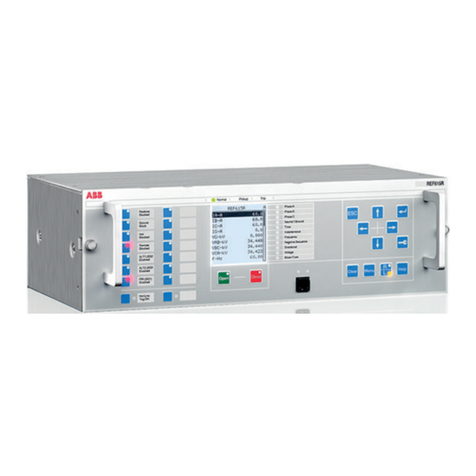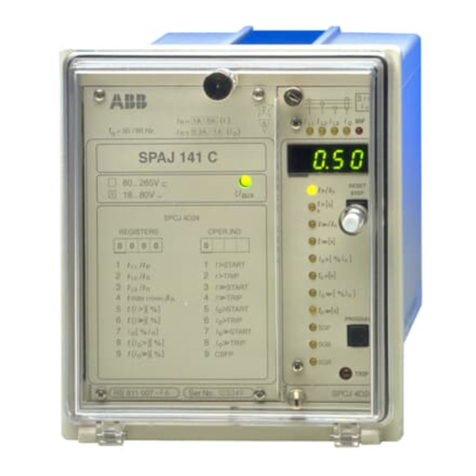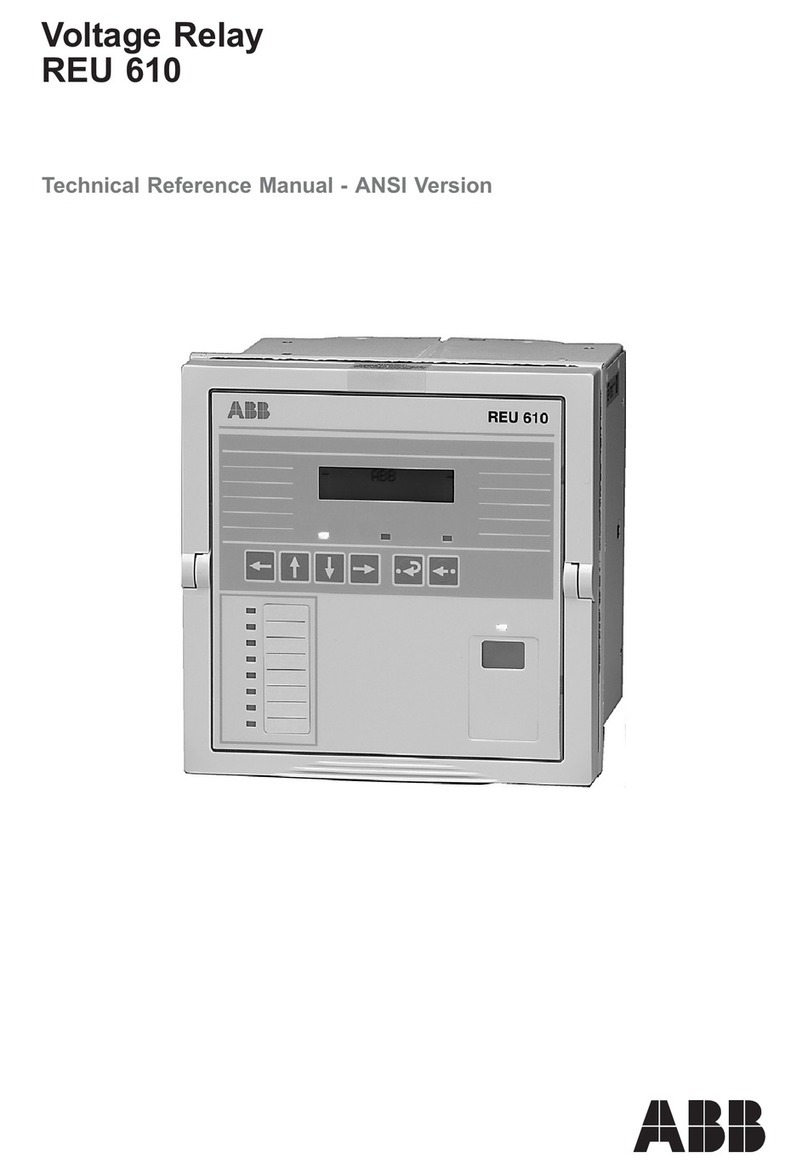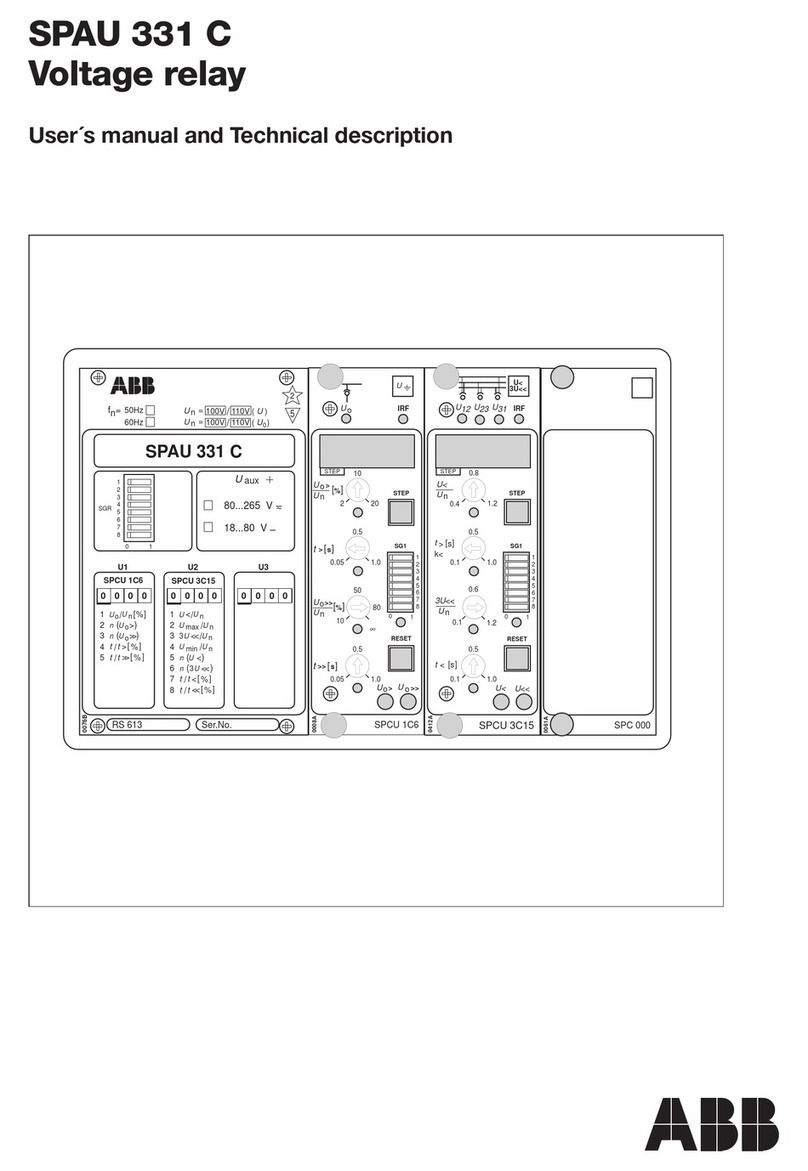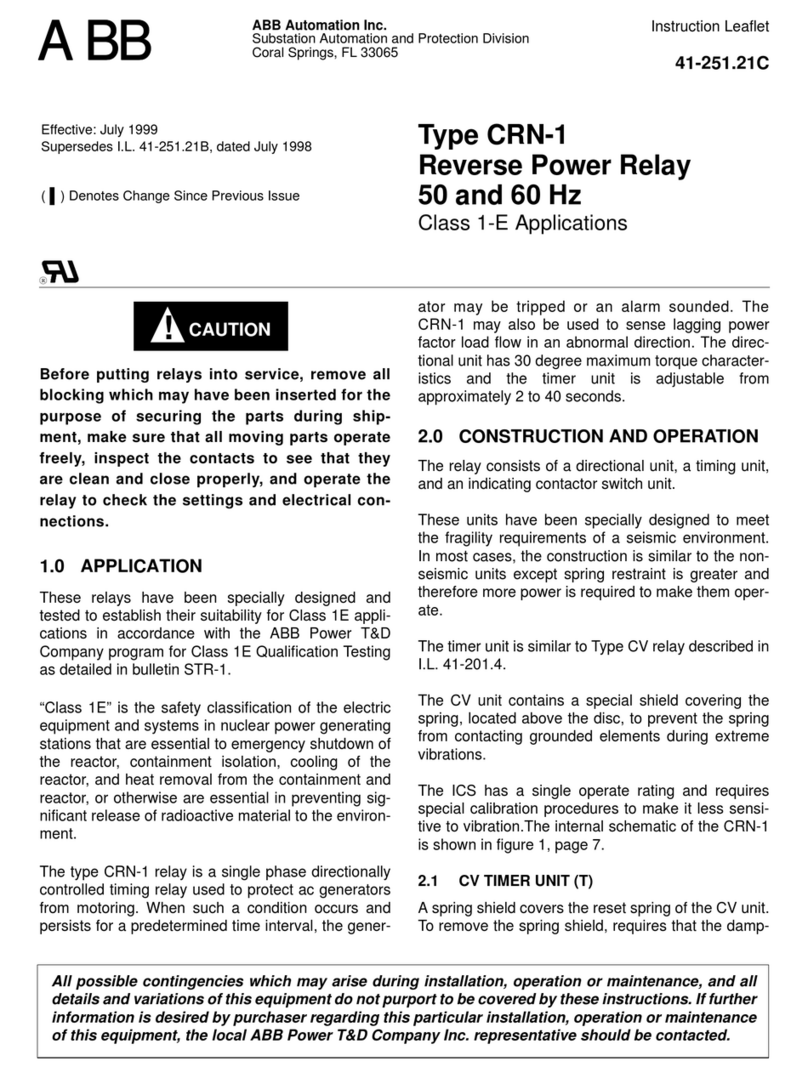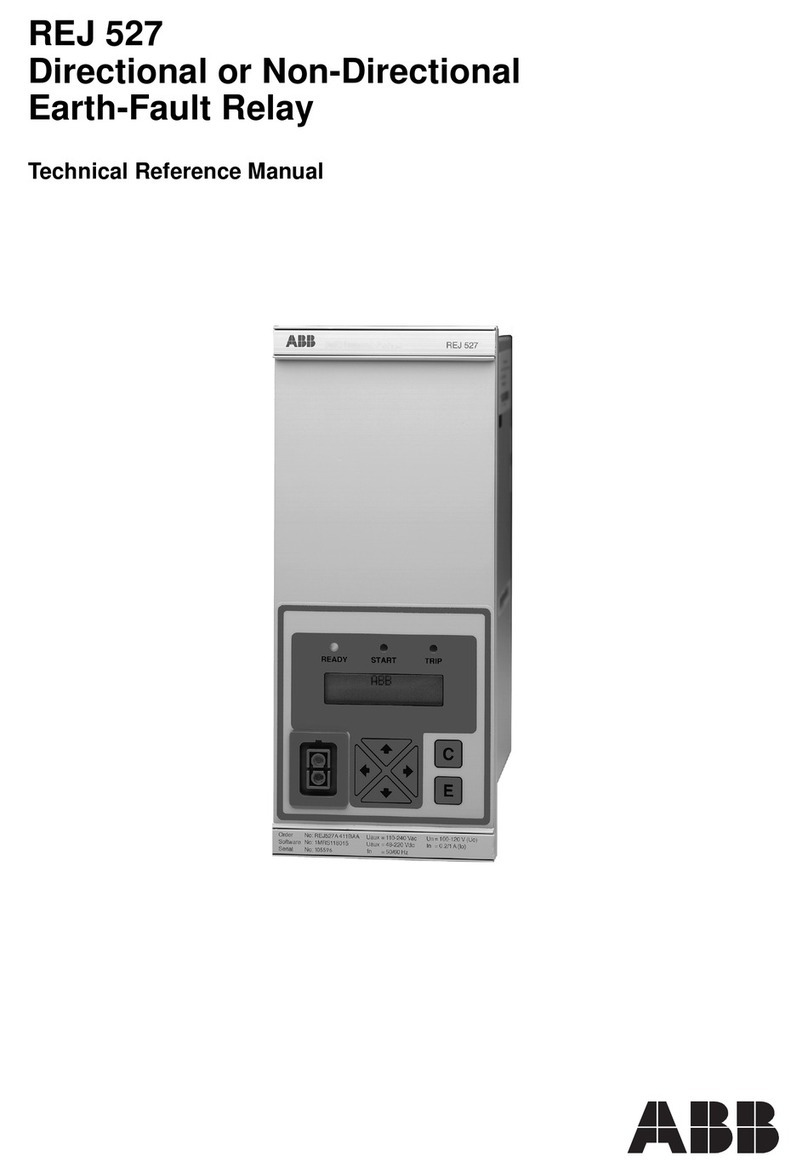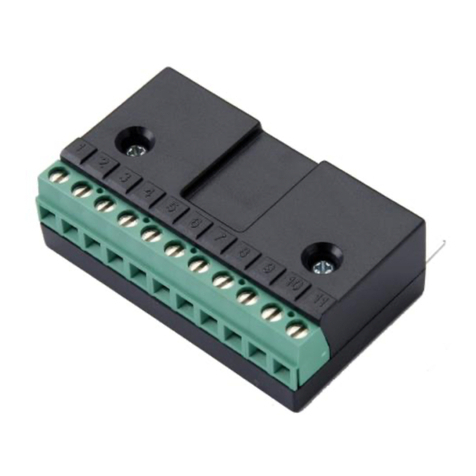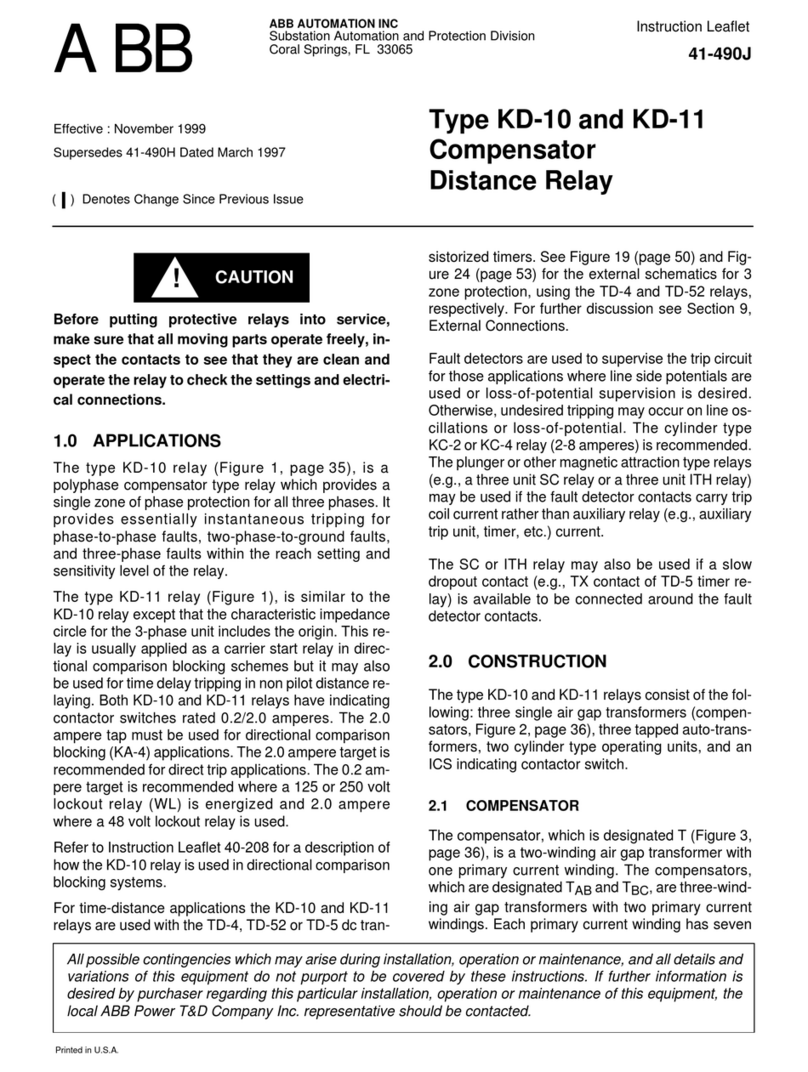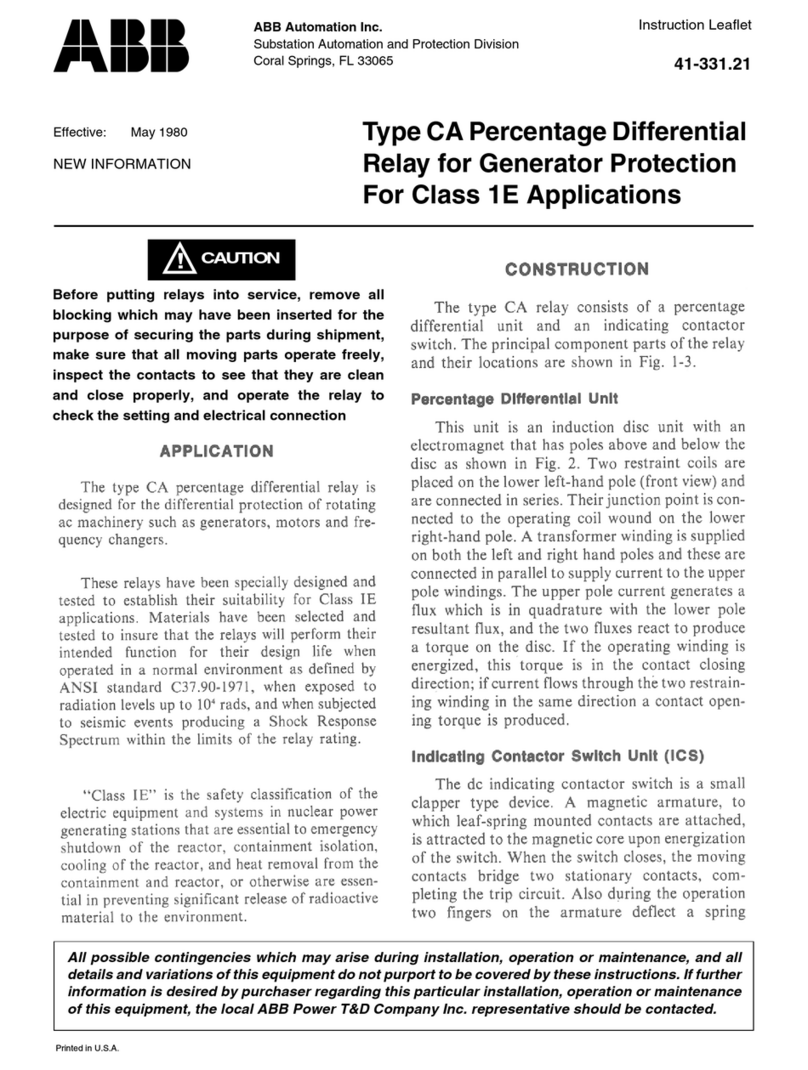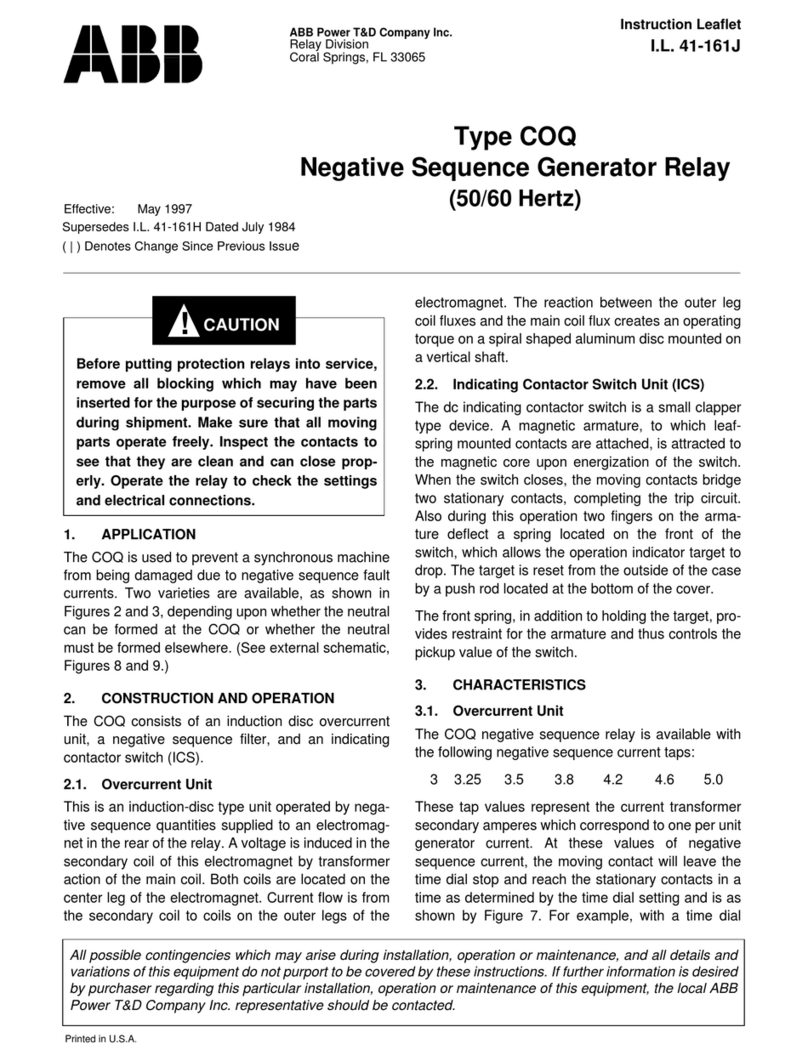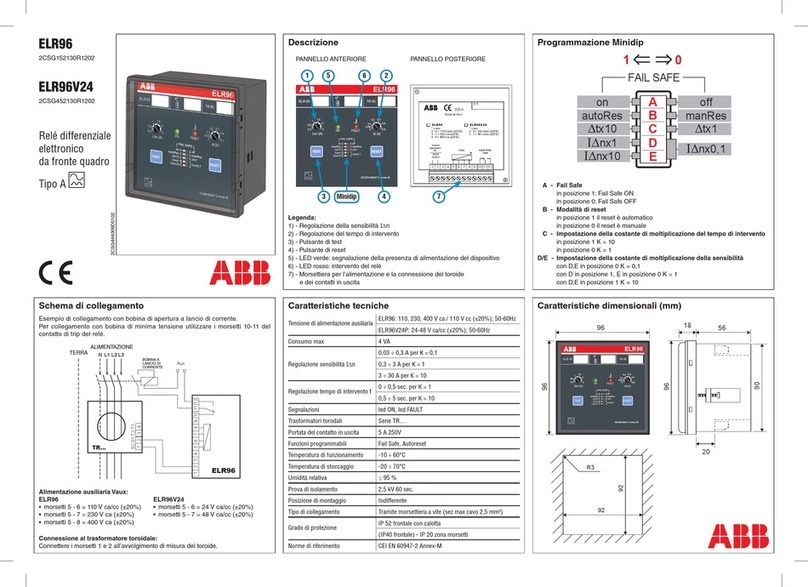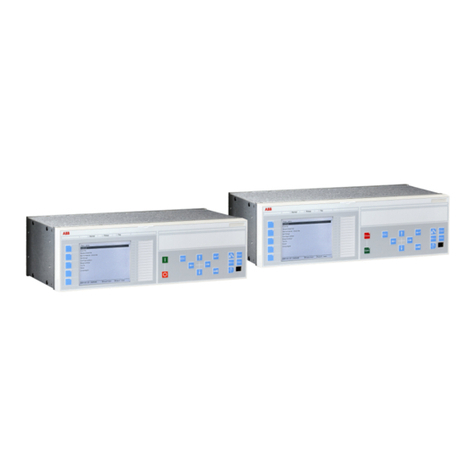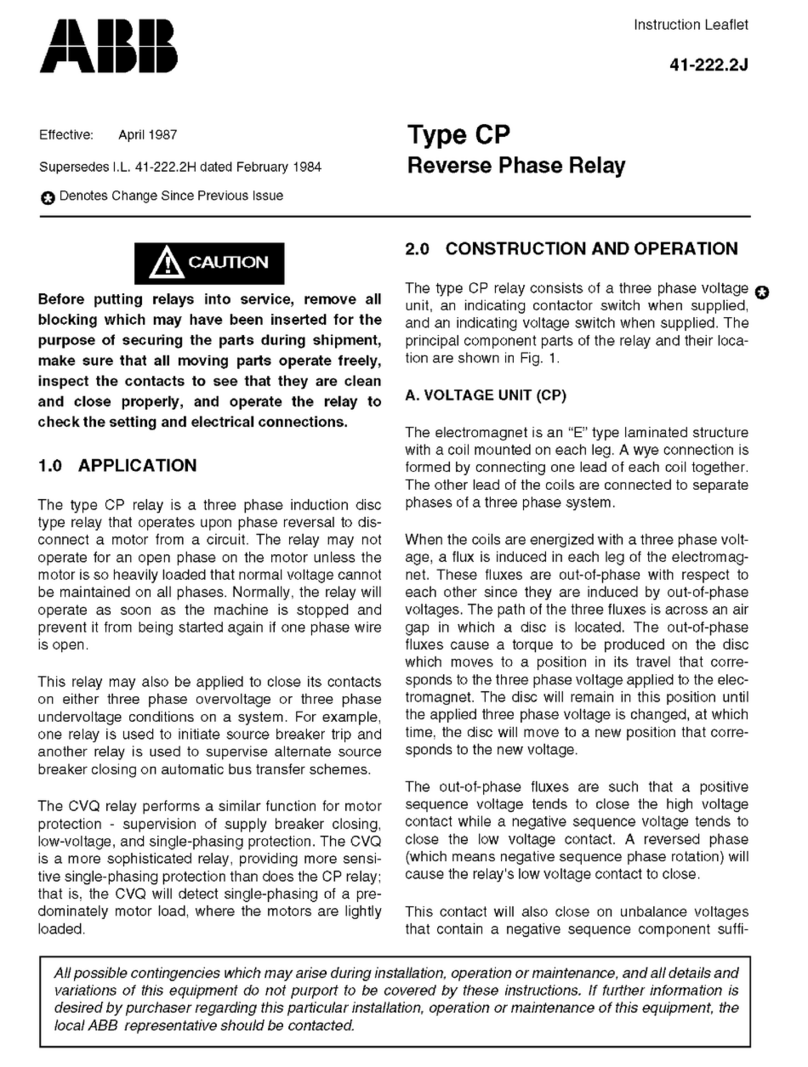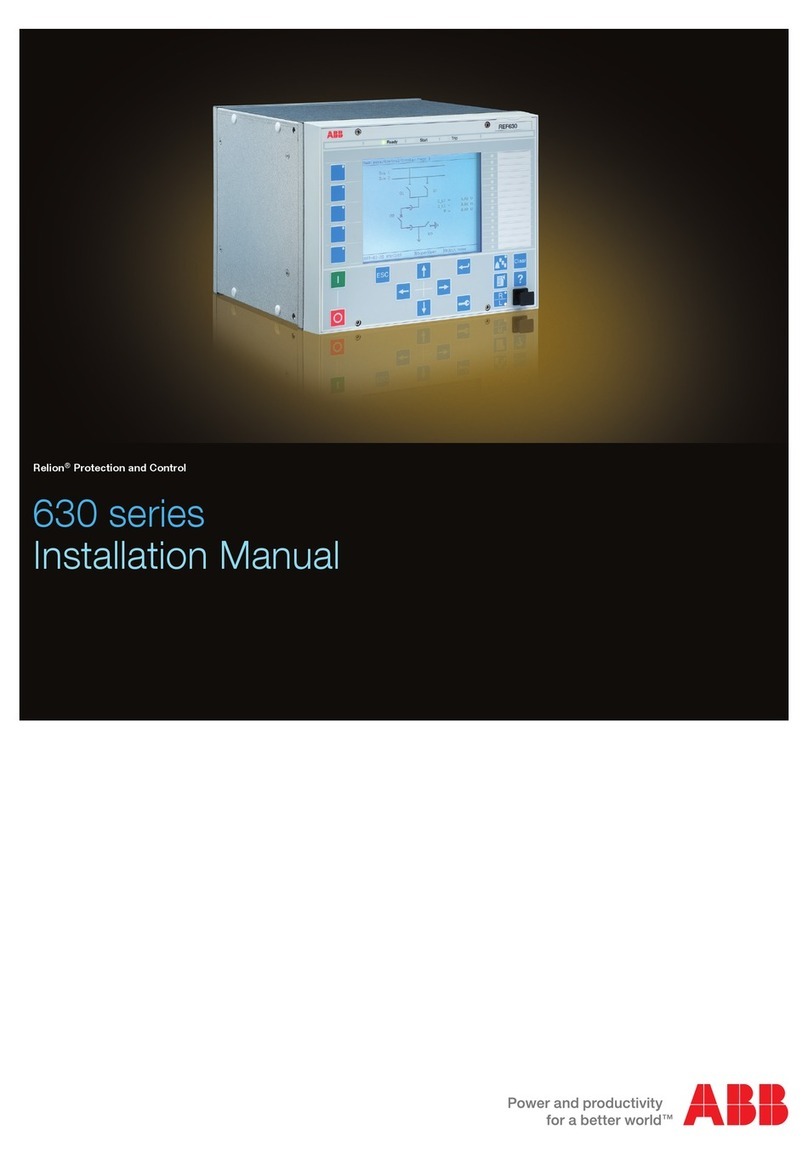
A
»
11
mv
ABB
Power
T
&
D
Company
Inc
.
Relay
Division
Coral
Springs
,
FL
33065
Instruction
Leaflet
I
.
L
41
-
971.31
-
Type
HCB
-
1
Pilot
Wire
Relay
System
Effective
November
1988
Supersedes
I
.
L
41
-
971.3
K
dated
August
1985
sfc
Denotes
change
since
previous
issue
CAUTION
2.1
Sequence
Filter
The
sequence
fflter
consists
of
a
three
-
legged
iron
core
reactor
and
a
set
of
resistors
designated
R
1
andRO
.
The
reactor
has
three
windings
;
two
primary
and
a
tapped
secondary
winding
,
wound
on
the
center
leg
of
a
“
F
’
type
of
lamination
.
The
secondary
taps
are
wired
totheA
,
BandCtapconnectionsinfrontofthereiay
.
R
0
consists
of
three
tube
resistors
with
taps
wired
to
the
F
,
G
and
H
tap
connections
in
the
front
of
the
relay
.
Before
putting
protective
relays
into
service
,
remove
all
blocking
which
may
have
been
inserted
for
the
purpose
of
securing
the
parts
during
ship
-
ment
,
make
sure
that
all
moving
parts
operate
freely
,
inspect
the
contacts
to
see
that
they
are
clean
and
close
properly
,
and
operate
the
relay
to
check
the
settings
and
electrical
connections
.
1
.
APPLICATION
2.2
Saturating
Transformer
The
type
HCB
-
1
relay
is
a
high
speed
pilot
wire
relay
designed
forthe
complete
phase
and
ground
protection
of
two
and
three
terminal
transmission
lines
.
Simultane
-
ous
tripping
of
the
relay
at
each
terminal
is
obtained
in
about
20
milliseconds
for
all
faults
.
A
complete
installa
-
tion
for
a
two
terminal
line
consists
of
two
relays
,
two
insulating
transformers
,
and
an
interconnecting
pilot
wire
circuit
.
For
a
three
terminal
line
,
three
relays
,
three
insulating
transformers
,
and
a
wye
-
connected
pilot
wire
circuit
with
branches
of
equal
series
resistance
are
required
.
The
output
of
the
sequence
filter
connects
to
the
primary
of
a
two
-
winding
saturating
transformer
.
The
primary
winding
is
tapped
and
wired
to
a
tap
blockT
in
the
front
of
the
relay
.
The
secondary
winding
is
con
nected
to
the
Zener
d
ipper
circuit
and
from
a
fixed
tap
to
the
relay
coil
circuits
.
2.3
Polar
Unit
This
unit
consists
of
a
rectangular
-
shape
magnetic
frame
,
an
electromagnet
,
a
permanent
magnet
,
and
an
armature
with
either
one
or
two
contacts
.
Thepoles
of
the
crescent
-
shaped
permanent
magnet
bridge
the
magnetic
frame
.
The
magnetic
frame
consists
of
three
pieces
joined
in
the
rear
with
two
brass
rods
and
sflvei
solder
.
These
non
-
magnetic
joints
represent
air
gaps
which
are
bridged
by
two
adjustable
magnetic
shunts
.
The
operating
and
restraint
windings
are
concentrically
wound
around
a
magnetic
core
.
The
armature
is
fas
-
tened
to
this
coreatoneend
and
floatsfnthefrontair
gap
atthe
otherend
.
The
moving
contact
is
connected
to
the
free
end
of
a
leaf
spring
.
The
HCB
-
1
and
HCB
relays
are
not
compatible
,
since
the
filter
response
is
not
the
same
.
2
.
CONSTRUCTION
The
relay
consists
of
a
combination
positive
,
nega
-
tive
,
and
zero
phase
sequence
filter
,
a
saturating
auxil
-
iary
transformer
,
two
full
wave
rectifier
units
,
a
polar
unit
,
a
Zener
dipper
,
and
an
indicating
contactor
switch
(
ICS
)
,
all
mounted
in
a
single
case
.
The
external
equip
-
ment
normally
supplied
with
the
relay
consists
of
an
insulating
transformer
,
a
millimeter
and
test
switch
.
All
possible
contingencies
which
may
arise
during
installation
,
operation
,
or
maintenance
,
and
all
details
j
and
variations
of
this
equipment
do
not
purport
to
be
covered
by
these
instructions
.
If
further
information
is
desired
by
purchaser
regarding
this
particular
installation
,
operation
or
maintenance
of
this
equipment
,
the
local
Asea
Brown
Boveri
representative
should
be
contacted
.
Courtesy of NationalSwitchgear.com
